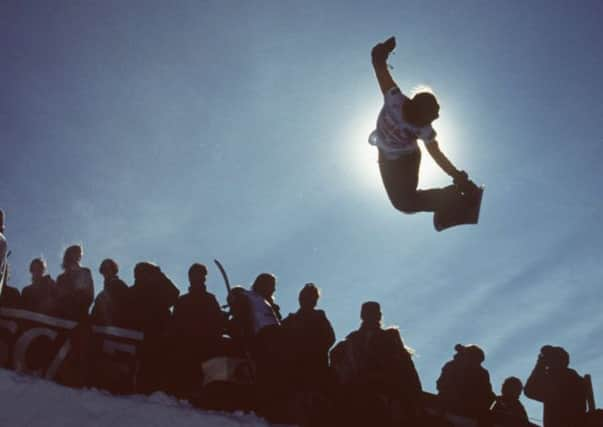Snowboard king attacks Winter Olympics - with reason


With an impeccable sense of timing, Norwegian snowboard god Terje Haakonsen – one of the leading lights in the sport for the last two decades – chose to devote much of a recent interview with Snowboard magazine to slamming the Winter Olympics.
(They kick off later this week, by the way, in case you’ve been wondering if this “Sochi” thing everyone’s talking about might perhaps turn out to be an exotic variety of pasta.)
Advertisement
Hide AdIt’s no great secret that Haakonsen has a troubled relationship with the Federation Internationale de Ski (FIS), the body that oversees skiing and snowboarding events at the Games. He boycotted the 1998 Winter Olympics in Nagano, Japan, at a time when he was considered one of the best halfpipe riders in the world because he was angry at what he saw as the FIS changing the qualification criteria mid-season to further their commercial interests. The ferocity of his attack in Snowboard, however, will have surprised even those who were already aware of his back story.
His various gripes spilled out over a grand total of four pages, but, to summarise, Haakonsen doesn’t think it’s right that the FIS – essentially a skiing body – should be running snowboarding’s upper tier: “guys directing the sport who don’t actually do the sport”. He thinks the format of the showcase halfpipe event has become stale: “when I watch snowboarding on TV… I don’t want to see the same thing every time”. He thinks the IOC is too profit-driven: “it’s about selling sponsorships, not the sport,” and he thinks that if snowboarders were able to get their hands on the levers of power and set up their own governing body, they’d be better able to organise high level competitive events that helped snowboarding develop and evolve.
To a fan of, say, football, the idea of a sport “evolving” must seem like an alien concept. Apart from a couple of minor tweaks to the rules, football today is more or less the same as it was 100 years ago, albeit played to a much higher level. But snowboarding is brand new: the first pro contest was run as recently as 1979, and that event was a straight downhill race. It wasn’t until 1983 that the first serious halfpipe competition was held and since then the concept of what’s possible between two perfectly sculpted waves of frozen water has expanded out of all recognition. Far from hindering the development of snowboarding, then, for the last couple of decades halfpipe contests have been pivotal in driving its evolution.
But Haakonsen does have a point about the format starting to seem a little stale, and there is a sense that halfpipe riders may now be reaching the upper limits of what can be done within the current set-up. In pioneering the triple cork (three consecutive off-axis rotations in a single jump), current world No 1 Sean White has taken the sport to a mindbending new high, but in doing so he may also have banged his head on a glass ceiling. As illustrated by the case of White’s former rival Kevin Pearce, who suffered a severe traumatic brain injury while attempting a double cork in 2009, a mistake at this level can have life-changing consequences. Will quadruple corks have become de rigeur by the time the 2018 Winter Olympics roll around? Unless the pipes get significantly bigger, or the riders start being catapulted into them by some artificial means, it seems unlikely. Yet even if that were to happen, would quad corks necessarily be a good thing? How big is too big? How dangerous is too dangerous? And – whisper it – in terms of spectator enjoyment, would all the extra risk even be worth it? Can your average sports fan really tell the difference between a triple cork and a quadruple cork? Can even your average snowboarder tell the difference?
One of the innovations Haakonsen suggests in his Snowboard interview is adding extra features and obstacles to the halfpipe, allowing riders to inject more variety into their routines. If the sport is to remain the exciting, cutting edge proposition it is now, perhaps this could be a viable way forward.
The Men’s and Ladies’ Halfpipe finals are on 11 and 12 February, www.sochi2014.com